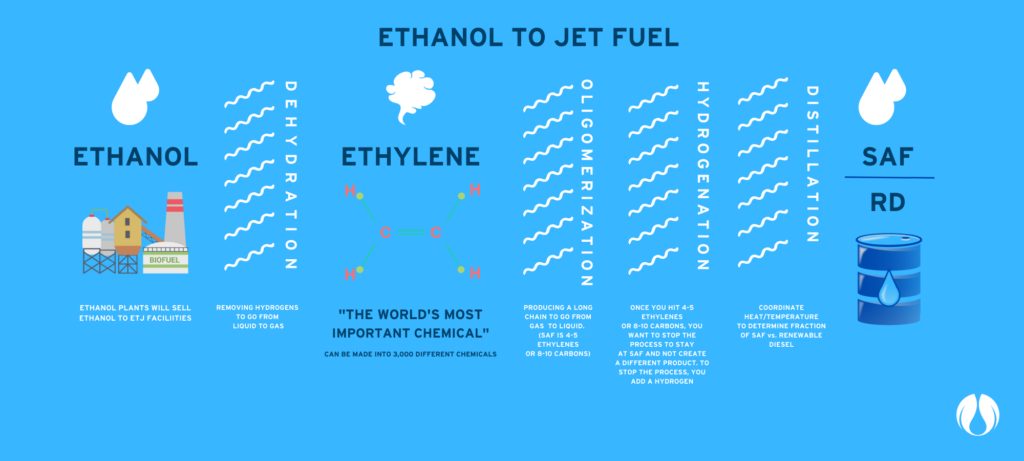
The Asks
Treasury should
- Keep the current 45Z tax notice intact, making a few modest changes:
- Provide additional prevailing wage flexibility.
- Geographic flexibility for job classifications.
- Allow yearly (instead of quarterly) compliance.
- Provide additional prevailing wage flexibility.
- Allow U.S. Department of Agriculture (USDA) feedstock emissions values to be used to determine 45Z credit amounts.
- Clarify that exported ethanol is eligible for the credit.
- Fix the “qualifying sale” regulation to include midstream ethanol sales.
- Clarify modeling for plants that produce non-fuel ethanol.
- Change the 45ZCF-GREET User Manual to allow utilizing biogenic carbon for food and beverage uses to count as a CI reducing practice.
- Finish the Provisional Emissions Rate (PER) regulation.
What Is Sustainable Aviation Fuel (SAF)?
SAF is broadly defined as any fuel used in planes that is derived (in whole or in part) from renewable resources.
How Is Sustainable Aviation Fuel Made?
Farm-based feedstocks are the only sources of clean, renewable energy available in large enough volumes to deliver on SAF goals. In a novel process called ethanol-to-jet (ETJ), ethanol is dehydrated into ethylene and then fed through a series of other chemical processes that eventually yield sustainable jet fuel.

What Do Lifecycle Analysis and Carbon Modeling Have to Do with SAF?
To spur new investments and ensure growth in the still-nascent SAF market, biofuels like bioethanol that are made with farm-based feedstocks must be allowed to qualify for certain tax incentives. The size of these incentives and the ability of farmers and bioethanol producers to rely on them depends on how much they can show their products reduce emissions compared to standard petroleum. The Treasury–which will award the tax incentives through the Internal Revenue Service (IRS)–will use a lifecycle analysis model to estimate just how much each individual feedstock for SAF (like bioethanol) lowers emissions.
For the U.S. market, the most up-to-date science is reflected in the U.S. Department of Energy’s Greenhouse Gases, Regulated Emissions, and Energy Use in Technologies (GREET) model. This model satisfies every criterion for lifecycle analysis, and is cited in numerous places as a valid way to assess hydrogen and non-aviation fuels for the purpose of qualifying for tax credits.
What is Maritime Fuel and Where Do Biofuels Fit into This Market?
Maritime or marine fuels are what power large container ships on long trips overseas. As with SAF, marine fuels represent an enormous opportunity to drive long-term demand for biofuels–opening an 87-billion-gallon market to U.S. producers.
What Impact Would Growth Energy’s Policy Priorities Have on Consumers, the Economy, or the Environment?
Major airlines and shipping companies across the globe and here in the U.S. have made commitments to (and investments in) reducing their emissions. The bioethanol industry is best positioned to deliver these fuels at commercial scale.
With current technologies, farm-based feedstocks–including ethanol and corn oil–are the primary source of clean, renewable energy that can be used to produce volumes large enough to meet the demand. As a result, harnessing the U.S. ethanol industry–which at 17.4 billion gallons per year accounts for over 80% of biofuel production in the U.S.–will be necessary to make sure American farmers benefit from the decarbonization of the aviation and maritime fuel sectors.